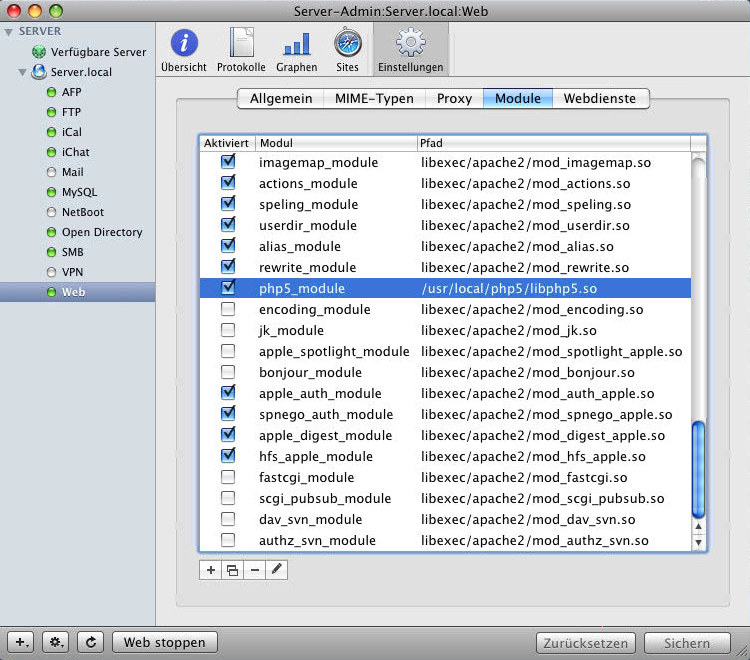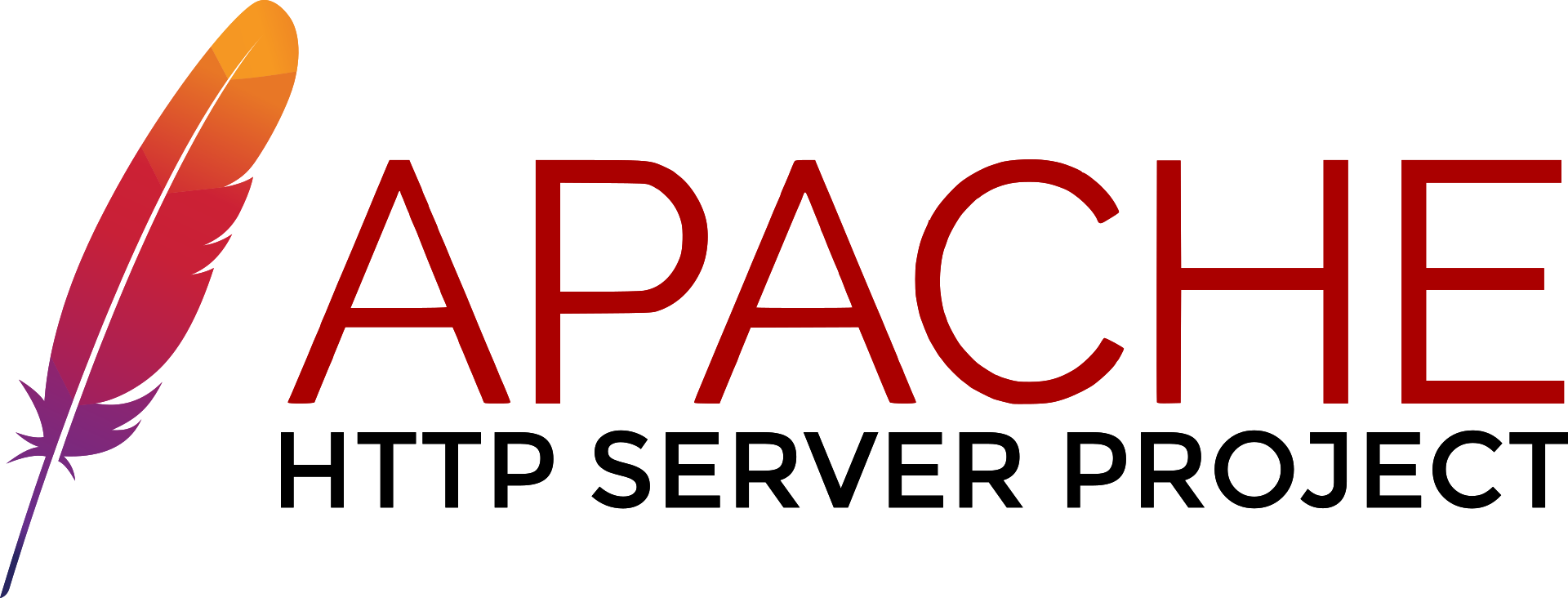Apache Server Info - Apple includes an install of Apache Web Server on all Mac OS X clients. This link will teach you more about the power that is Apache. DynDNS.com - Helping those with a Dynamic (changing) IP address still be seen from the web, this service will give you a free hostname to use instead of your ip. To check the version of Apache installed run the following command in the Terminal. $ httpd -v Server version: Apache/2.4.41 (Unix) Server built: Aug 29 2019 19:01:57 Note! MacOS Catalina comes with Apache 2.4.41 To start Apache web server run the following command. $ sudo apachectl start This command will start Apache server. Install PHP on Mac OS X with Apache Web Server. Install PHP on Mac OS X with Apache Web Server. Created November 15, 2019; Author tuto; Category PHP Tutorial; Mac users have the opportunity to choose either a binary or a source installation. Actually, OS X may came up with Apache and PHP installed by default. This is more likely to be an old. To check the version of Apache installed run the following command in the Terminal. $ httpd -v macOS Mojave comes with Apache/2.4.34. To start Apache web server run the following command. $ sudo apachectl start This command will start Apache server. When you use sudo in the terminal then you will be prompted to enter your admin password to proceed. I install XAMPP server on MAC OS 10.6 it was working fine. After a lot of days I checked it, but not working this time, localhost not opening this time. After some R&D I reinstall XAMPP server.

Here is my definitive guide to getting a local web server running on OS X 10.14 “Mojave”. This is meant to be a development platform so that you can build and test your sites locally, then deploy to an internet server. This User Tip only contains instructions for configuring the Apache server, PHP module, and Perl module. I have another User Tip for installing and configuring MySQL and email servers.
Note: This user tip is specific to macOS 10.14 “Mojave”. Pay attention to your OS version. There have been significant changes since earlier versions of macOS.Another note: These instructions apply to the client versions of OS X, not Server. Server does a few specific tricks really well and is a good choice for those. For things like database, web, and mail services, I have found it easier to just setup the client OS version manually.

Requirements:
- Basic understanding of Terminal.app and how to run command-line programs.
- Basic understanding of web servers.
- Basic usage of vi. You can substitute nano if you want.
Optional: Xcode is required for adding PHP modules.
Lines in bold are what you will have to type in. Lines in bold courier should be typed at the Terminal.Replace <your short user name> with your short user name.
Here goes.. Enjoy!
To get started, edit the Apache configuration file as root:
sudo vi /etc/apache2/httpd.conf
Enable PHP by uncommenting line 177, changing:
#LoadModule php7_module libexec/apache2/libphp7.so
to
LoadModule php7_module libexec/apache2/libphp7.so
(If you aren't familiar with vi, go to line 177 by typing '177G' (without the quotes). Then just press 'x' over the '#' character to delete it. Then type ':w!' to save, or just 'ZZ' to save and quit. Don't do that yet though. More changes are still needed.)
Working with Adobe Acrobat Reader DC for Mac is easy, as it has some very cool tools to work with. View and annotate PDFs. Free adobe acrobat for mac download. With a modern, tabbed viewing interface that allows you to view multiple documents from within the same window, and apps and tools that can enhance viewing, revising and annotating documents, you are sure to improve your workflow.Key features include:.
If you want to run Perl scripts, you will have to do something similar:
Enable Perl by uncommenting line 178, changing:
#LoadModule perl_module libexec/apache2/mod_perl.so
to
LoadModule perl_module libexec/apache2/mod_perl.so
Enable personal websites by uncommenting the following at line 174:
#LoadModule userdir_module libexec/apache2/mod_userdir.so
to
LoadModule userdir_module libexec/apache2/mod_userdir.so
and do the same at line 511:
#Include /private/etc/apache2/extra/httpd-userdir.conf
to
Include /private/etc/apache2/extra/httpd-userdir.conf
Now save and quit.
Open the file you just enabled above with:
sudo vi /etc/apache2/extra/httpd-userdir.conf
and uncomment the following at line 16:
#Include /private/etc/apache2/users/*.conf

to
Include /private/etc/apache2/users/*.conf
Save and exit.
Lion and later versions no longer create personal web sites by default. If you already had a Sites folder in Snow Leopard, it should still be there. To create one manually, enter the following:
mkdir ~/Sites
echo '<html><body><h1>My site works</h1></body></html>' > ~/Sites/index.html.en
While you are in /etc/apache2, double-check to make sure you have a user config file. It should exist at the path: /etc/apache2/users/<your short user name>.conf.
That file may not exist and if you upgrade from an older version, you may still not have it. It does appear to be created when you create a new user. If that file doesn't exist, you will need to create it with:
sudo vi /etc/apache2/users/<your short user name>.conf
Use the following as the content:
<Directory '/Users/<your short user name>/Sites/'>
AddLanguage en .en
AddHandler perl-script .pl
PerlHandler ModPerl::Registry

Options Indexes MultiViews FollowSymLinks ExecCGI
AllowOverride None

Require host localhost
</Directory>
Now you are ready to turn on Apache itself. But first, do a sanity check. Sometimes copying and pasting from an internet forum can insert invisible, invalid characters into config files. Check your configuration by running the following command in the Terminal:
apachectl configtest
Php Web Server Mac
If this command returns 'Syntax OK' then you are ready to go. It may also print a warning saying 'httpd: Could not reliably determine the server's fully qualified domain name'. You could fix this by setting the ServerName directive in /etc/apache2/httpd.conf and adding a matching entry into /etc/hosts. But for a development server, you don't need to do anything. You can just ignore that warning. You can safely ignore other warnings too.
Turn on the Apache httpd service by running the following command in the Terminal:
sudo launchctl load -w /System/Library/LaunchDaemons/org.apache.httpd.plist
In Safari, navigate to your web site with the following address:
http://localhost/
It should say:
It works!
Now try your user home directory:
http://localhost/~<your short user name>
It should say:
My site works
Now try PHP. Create a PHP info file with:
echo '<?php echo phpinfo(); ?>' > ~/Sites/info.php
Download a copy of Yosemite from Apple. Prior to launch you can get it here, and post launch it will. OS X 10.10, aka Yosemite, sports a more modern look and bridges the gap between Apple's desktop and mobile devices. The new Continuity helps you hand off tasks from iPhone to iPad to Mac, but that. Os x yosemite for mac pro. Get the best deals on Apple MacBook Pro Mac OS X 10.10, Yosemite Laptops and find everything you'll need to improve your home office setup at eBay.com. Fast & Free shipping on many items! The Mac App Store is built into OS X Yosemite, so it’s easy to get the apps you want. Turn your Mac into a complete professional recording studio. View in Mac App Store. OS X can search the Mac App Store to find the app that can open the file.
And test it by entering the following into Safari's address bar:
Apache Web Server Mac High Sierra
http://localhost/~<your short user name>/info.php
You should see your PHP configuration information.
To test Perl, try something similar. Create a Perl test file with:
echo 'print $ENV{MOD_PERL} . qq{n};' > ~/Sites/info.pl
And test it by entering the following into Safari's address bar:
http://localhost/~<your short user name>/info.pl
You should see the string 'mod_perl/2.0.9'.
If you want to setup MySQL, see my User Tip on Installing MySQL.
If you want to add modules to PHP, I suggest the following site. I can't explain it any better.
If you want to make further changes to your Apache system or user config files, you will need to restart the Apache server with:
sudo apachectl graceful
The Apple USB-C-to-USB Adapter lets you connect iOS devices and many of your USB accessories to a MacBook with a USB-C port. Plug the USB-C end of the adapter into the USB-C port on your MacBook, and then connect your flash drive, camera or other standard USB device. Usb phones for mac. Remove the USB wall charger adapter from your phone charger, leaving just the USB charging cable. Connect your phone to your computer’s USB port via the charging cable. Open Mac Finder. Locate Android File Transfer on your list of drives. Double-click the Android drive icon. After this, you’ll be able to view a file with a complete list of applications. USB Wall Charger, LUOATIP 3-Pack 2.1A/5V Dual Port USB Cube Power Adapter Charger Plug Charging Block Replacement for Phone Xs/XR/X, 8/7/6 Plus, Samsung, LG, HTC, Moto, Android Phones 4.6 out of 5.